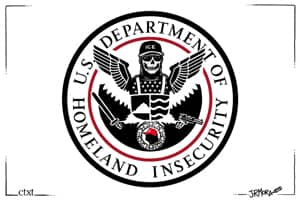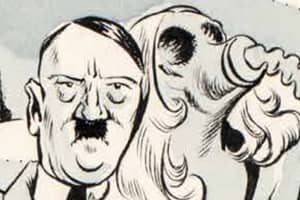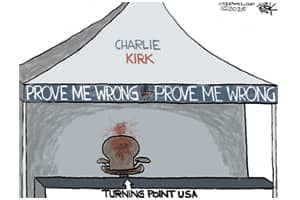The Maine, the big excuse
.
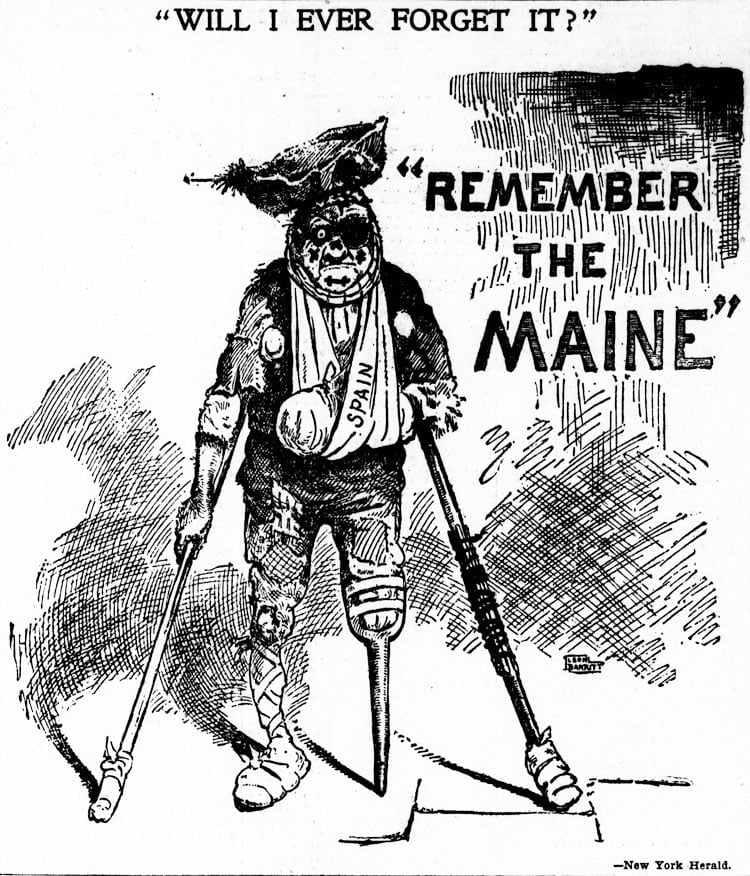
The Herald, May 15. "Remember the Maine". Despite not being able to prove Spain's involvement in the sinking of the Maine (which may have been due to an accident although others claimed it was sunk by the Americans), the press continued to repeat that it was the Spaniards.
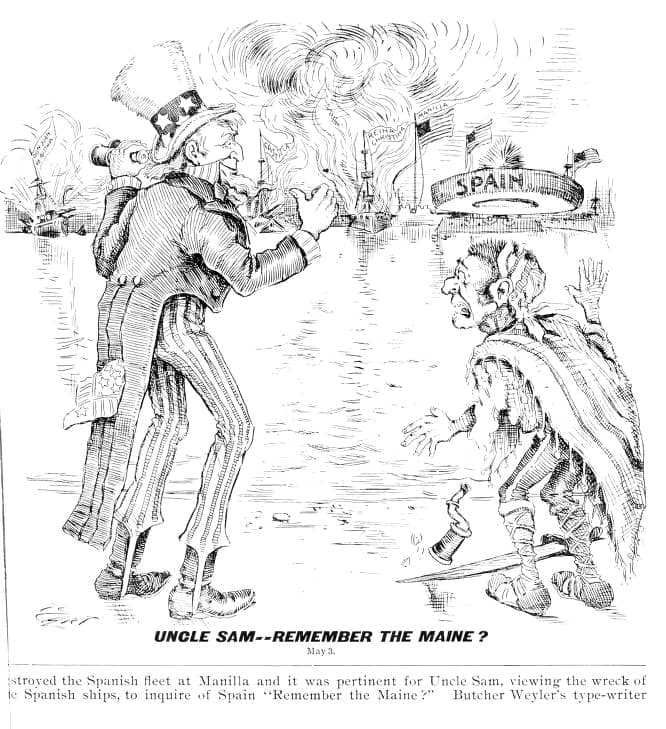
The Spanish fleet is destroyed in Manila, and Uncle Sam, seeing the wreckage of the Spanish ships, asks Spain, "Remember the Maine?"
Cartoon of May 3, 1898, published in "Cartoons of the Spanish-American War" book of cartoons by the cartoonist of the Minneapolis Journal Charles Lewis Bartholomew ,"Bart" (1869-1949).

Legend: Way of the M. (It is understood that it refers... to shit?) from the spanish expressión "A la mierda"
Spanish ships expelling the Americans represented once again as pigs.
Illustration published in the magazine Don Quixote number 21 of Friday 27 May,

Cover of the magazine La Campana de Gràcia, number 1518 of 28 May.
Title: "Desperation of Spain". Caption: "To save the rights of Europe in America, I am giving my children, my blood and my treasures... And Europe is abandoning me!
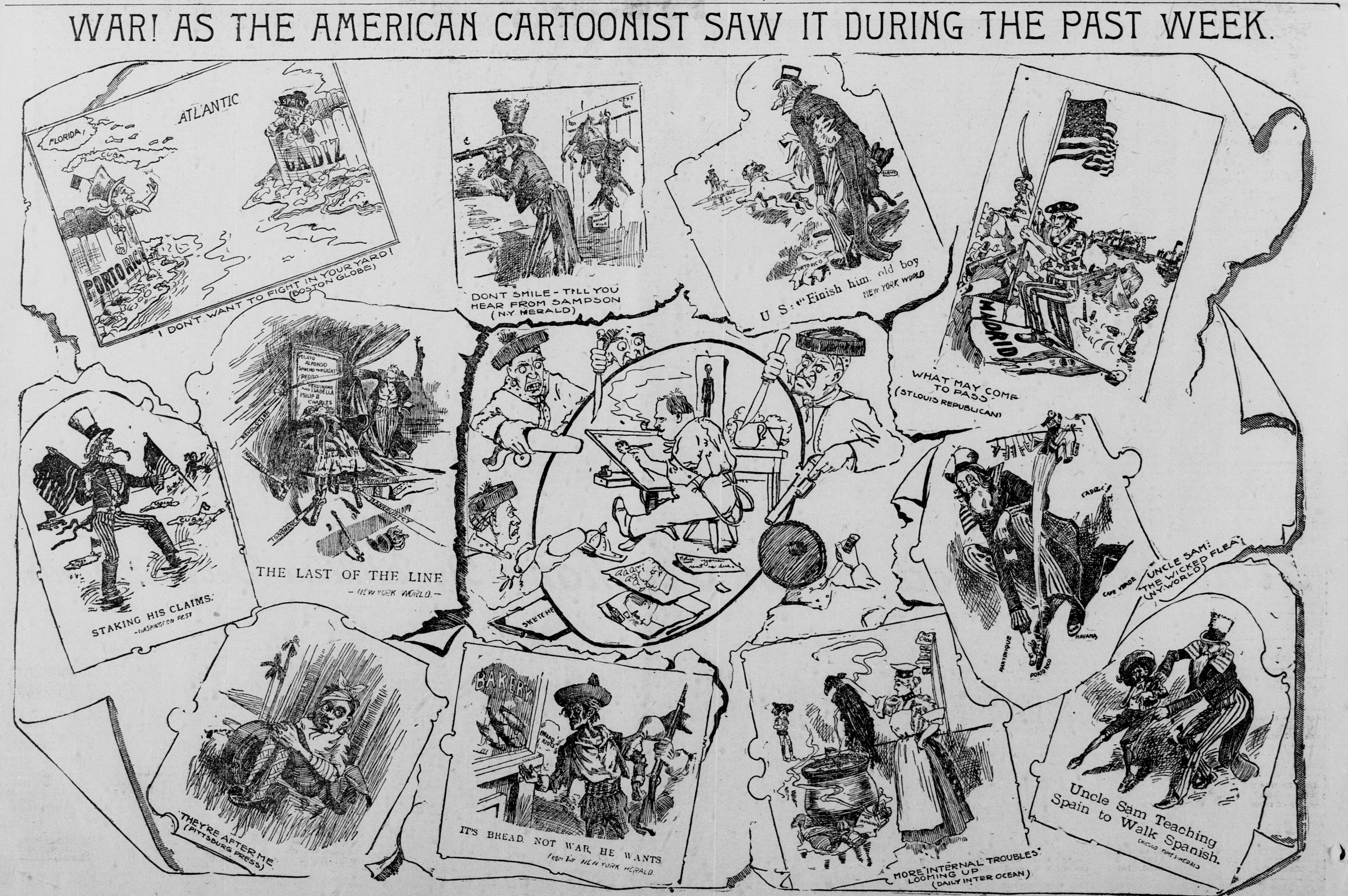
22 May, collection of cartoons from different American media published in The San Francisco Call.

Cartoon in The Herald, 3 June. President Sagasta surrenders with the king, dwarfed, crying, touched in his honour, the bank of Spain sinks to the bottom.
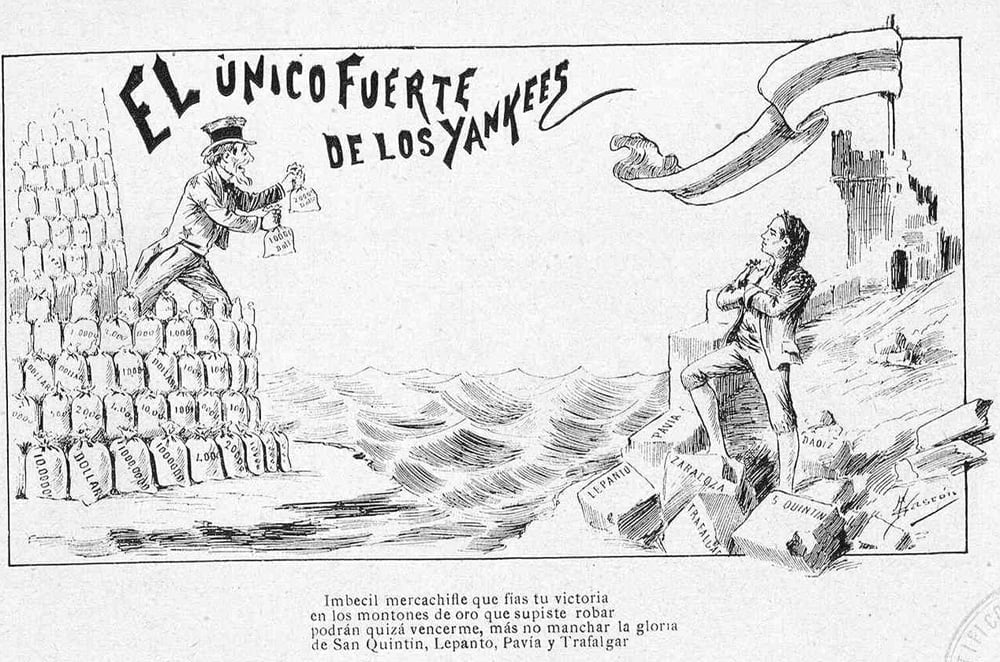
Madrid Cómico magazine number 799 of June 11. The cartoon extols Spain's historic victories and despise the Americans by pointing out that their only power is money.
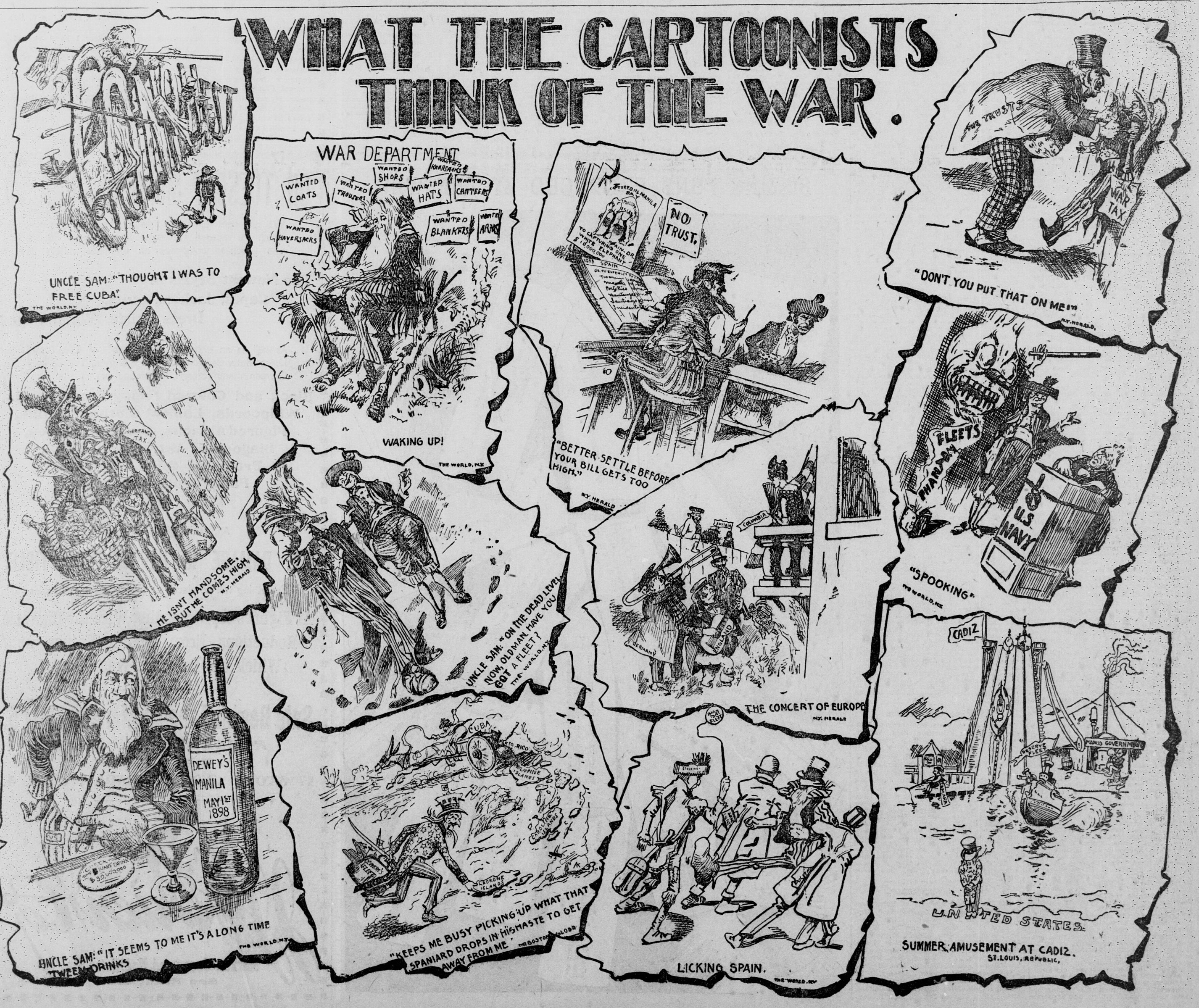
Compilation of cartoons published in The San Francisco Call, Sunday 3 July.
The Spanish "monster"
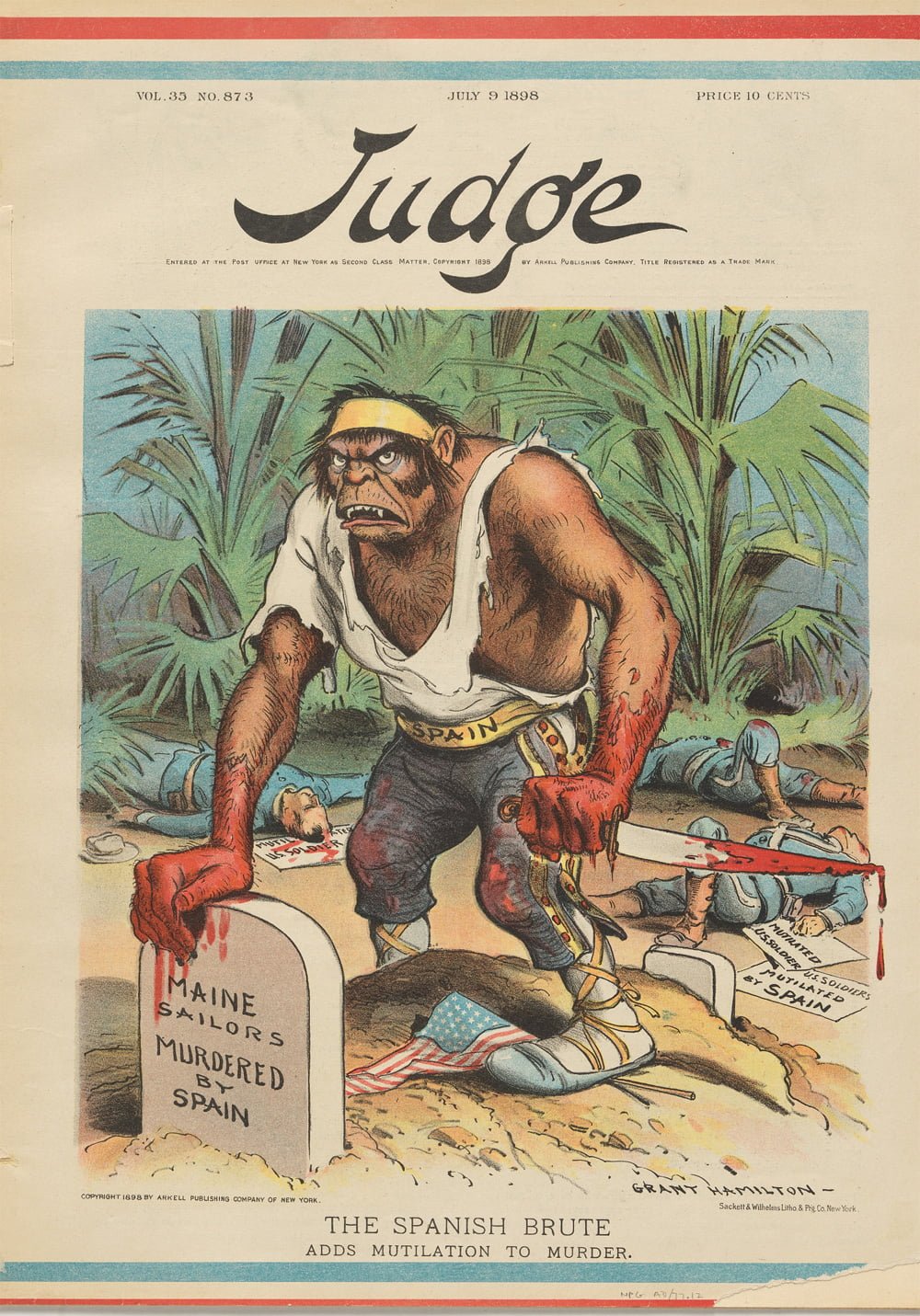
Judge magazine, although it was not a sensationalist publication, already at the beginning of the war published some images going with the flow, such as the cover illustrated by Grant Hamilton (1862 - 1926) on 9 July 1898 with the legend: "The Spanish brute adds mutilation to murder", related to the death of the sailors in the explosion of the Maine.

July 10th. Another "Barber" cartoon in The Herald with the caption "Will Spain let it fly? In the image a Spaniard throwing salt on the wings of the dove that represents peace.
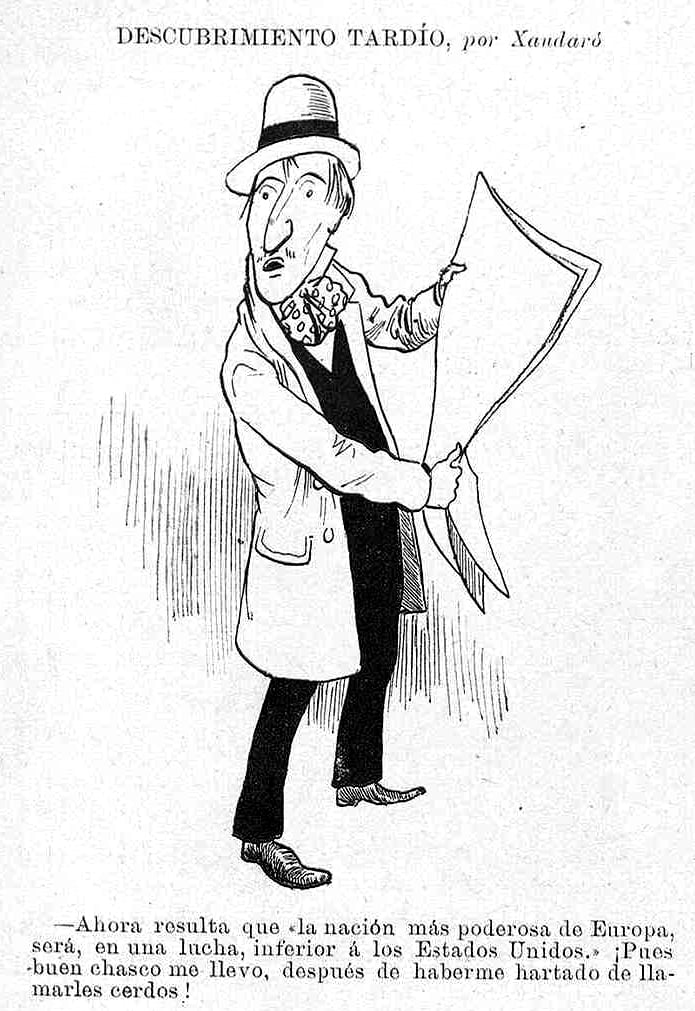
Cartoon by Joaquín Xaudaró from 23 July 1898 in the magazine Madrid Cómico.
Xaudaró draws on a mixture of self-criticism and irony and say:
"Now it turns out that the most powerful nation in Europe will, in a fight, be inferior to the United States, and I am disappointed, after having called them pigs so many times!"
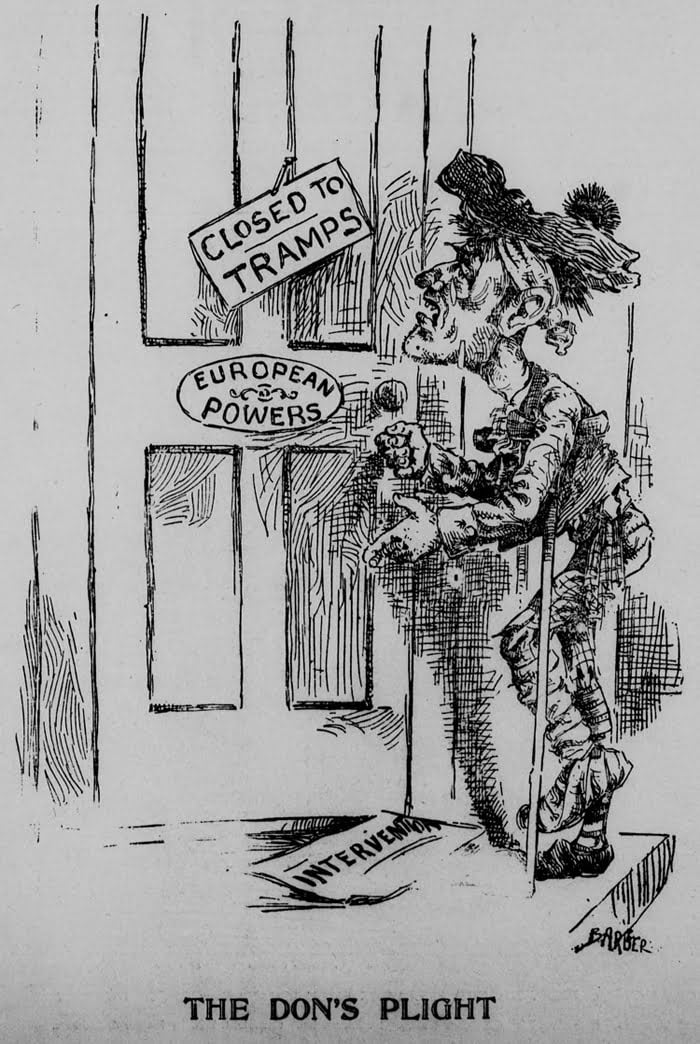
Again Barber in The Herald, August 2. A Spaniard knocks on Europe's door asking for intervention in the war. The sign reads: "Closed to cheaters" (or vagrants?)

4 August, unsigned cartoon in The Valentine Democrat.
Description. A figure representing Spain looks at a painting on the wall that reads: "your days are numbered and you will no longer make mankind miserable". In the book, on his knees, he cites the Inquisition, the sinking of the Maine, murders, tortures and other international "records of glorious spain".
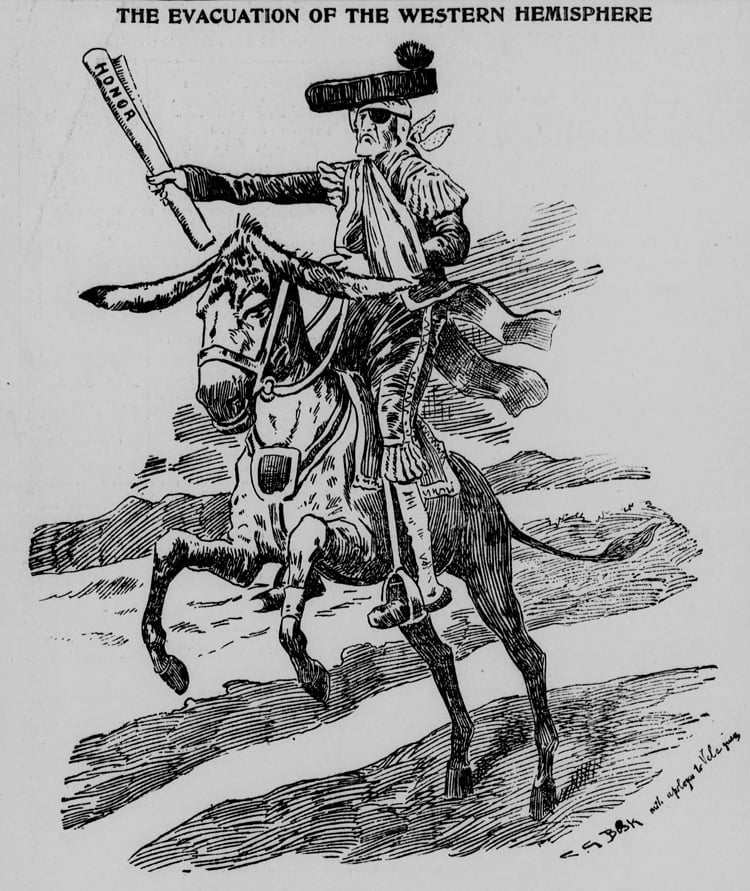
On 14 August, the war is over. The Herald publishes this cartoon entitled "The Evacuation of the Western Hemisphere" with a Spaniard retreating on a donkey, holding in his right hand a parchment with the legend "honour". The painting "Prince Balthasar Charles on horseback" by Velázquez is parodied. The author apologises to Velázquez along with his signature.

"The lesson is learned". In the scene, again Uncle Sam with the rule of war in his hand, forces the Spanish to learn the lesson of peace.
Cartoon of September 2nd published in The Kinsley Graphic and reproduced by many other media.
Sources consulted:
![]() Biblioteca Virtual dePrensa Histórica
Biblioteca Virtual dePrensa Histórica
![]() Arca, arxiu de revistes catalanes antigues
Arca, arxiu de revistes catalanes antigues
![]() Biblioteca del Congreso de Estados Unidos
Biblioteca del Congreso de Estados Unidos
![]() Cartoons of the Spanish-American War. Charles Lewis Bartholomew, 1869-1949
Cartoons of the Spanish-American War. Charles Lewis Bartholomew, 1869-1949
![]() Los periódicos de Madrid en 1898, Concha Edo, UCM (PDF)
Los periódicos de Madrid en 1898, Concha Edo, UCM (PDF)
![]() 1898: Prensa y opinión pública en España y los Estados Unidos, Juan Jiménez Mancha , UCM Revista SEECI
1898: Prensa y opinión pública en España y los Estados Unidos, Juan Jiménez Mancha , UCM Revista SEECI
![]() Prensa sensacionalista americana en el S.XIX y su contribución en la guerra hispano-estadounidense. Análisis de las portadas americanas de la época. Fernando Barahona. (PDF)
Prensa sensacionalista americana en el S.XIX y su contribución en la guerra hispano-estadounidense. Análisis de las portadas americanas de la época. Fernando Barahona. (PDF)

